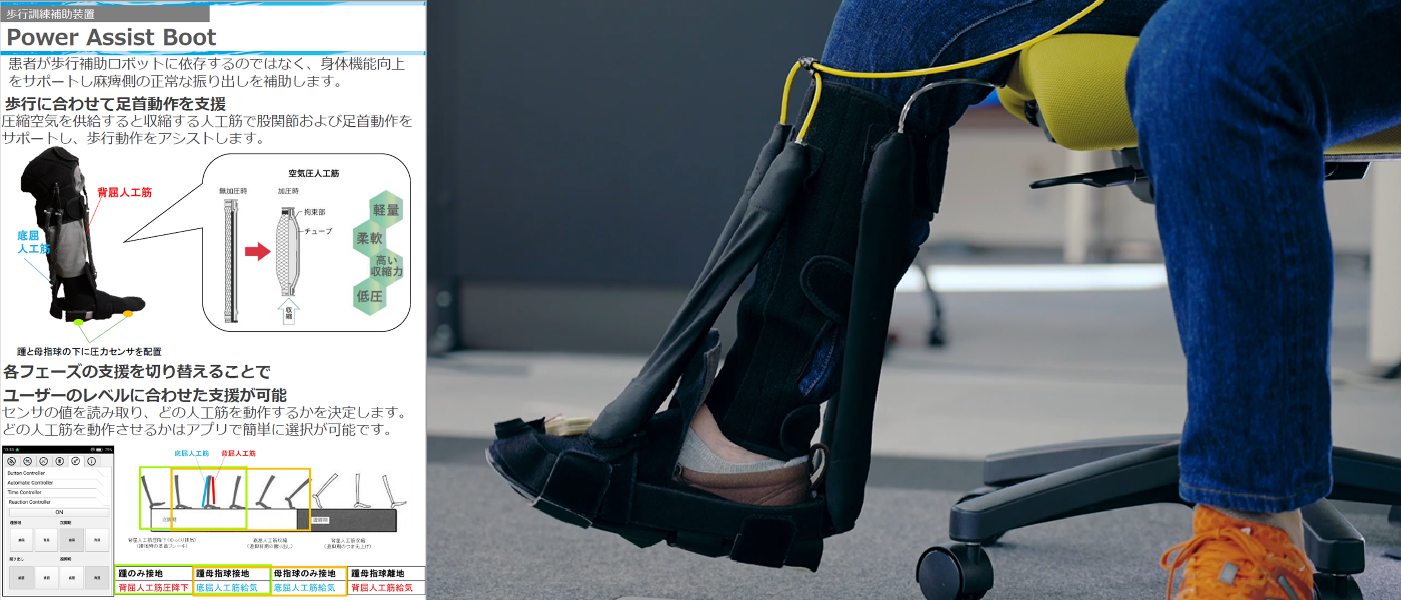Key points of this research results
- We have developed an active short leg orthosis that can support ankle joint plantar dorsiflexion motion according to the gait phase.
- The device consists of pneumatic artificial muscles as the driving unit, sensors placed on the sole as the trigger, and a controller as the control and air pressure supply source. We confirmed that this orthosis enabled the patient to walk with a large movement of the ankle joint even with little muscle activity.
- The results have been applied to the "Power Assist Boots" sold by Daiya Industry Co., Ltd. and are now being tested to support rehabilitation for stroke paraplegia and spinal cord injury patients.
Outline
It is well known in clinical practice that short leg orthoses, which assist hemiplegics in walking, significantly improve their gait. There are a wide variety of short leg orthoses, including plastic short leg orthoses without leg joints called shoehorns, short leg orthoses with metal posts, and plastic orthoses with leg joints. However, most of these orthoses are passive and are only able to provide the necessary support during specific phases of gait.
We have developed an active short leg orthosis that divides the gait cycle into four phases by measuring heel and ball of thumb contact with pressure sensors, and supports plantar dorsiflexion of the ankle joint with pneumatic gel artificial muscles according to each phase.
The device consists of pneumatic artificial muscles as the driving unit, sensors placed on the sole as the trigger, and a controller as the control and air pressure supply source. When a walking test was conducted using the developed orthosis, the average value of the maximum flexion angle was 5.62[°] greater with support than without support. In addition, the %MVC of surface EMG potentials decreased by 36.4[%] in the tibialis anterior muscle and 16.7[%] in the gastrocnemius muscle with support compared to without support.
These results confirm that with the support of this device, it is possible to walk while moving the ankle joint widely even with little muscle activity. This result has been applied to the "Power Assist Boots" sold by Daiya Industry Co., Ltd. and has started to be tested for rehabilitation support for stroke paraplegia and spinal cord injury patients.


 Home
Home



